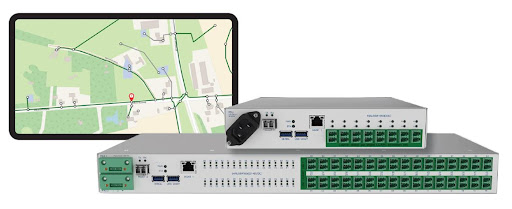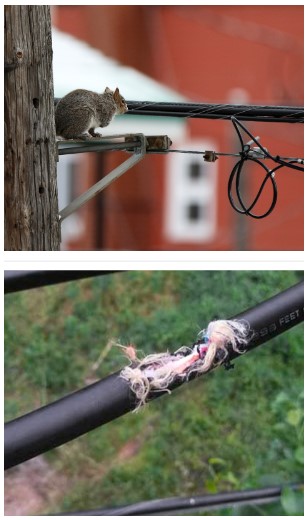From supporting live online classes to delivering reliable high-speed internet services to students and administration, optical fiber networks play an essential role across university campuses. Discover the numerous benefits of implementing fiber monitoring systems and how they can enhance IT and communications services.
Maximizing Network Reliability and Performance
By utilizing a fiber monitoring system on a university campus, IT and communications services can experience a significant boost in network reliability, performance, and uptime metrics. These automated systems are designed to continuously monitor the fiber infrastructure (ie, the optical fibers within the cables spanning the campus) for detrimental and costly issues like physical breaks or tampering, enabling IT and Telecom professionals to rapidly identify and resolve communications issues. With proactive monitoring and the ability of these systems to also alert to degrading performance situations before they become major issues, universities can ensure the integrity of the physical fiber infrastructure, which is essential for providing a seamless and consistent experience for students, faculty, and staff.

Proactive Detection and Quick Resolution of Fiber Network Issues
One of the primary features of a fiber monitoring system is its ability to proactively detect fiber issues when they happen. With real-time monitoring, campus IT and Telecom service teams receive instant alerts along with pertinent information about any abnormalities or potential problems, such as a high signal loss outside of the desired performance threshold or a complete break of the connection. By also identifying the specific fiber experiencing the issue and its precise location in the span, service teams won't waste valuable time finding the issue(s) and can take immediate action to address and resolve the issue as quickly as possible. By minimizing the mean time to repair (MTTR), universities can avoid long network downtimes and reduce expensive labor costs.
It's important to note that many university campuses are at greater risk of experiencing physical fiber issues, most accidental in nature, resulting from campus expansion, infrastructure updating projects, and other natural events. While never intended, its not uncommon for construction crews digging in the ground to clear space for new buildings or around a building to sever a communications line. Nature can also cause fiber issues, as high winds can bring down lines while squirrels and other animals can chew through cables, which per an article by Doug Dawson in 2019 ("Squirrels Are the Number One Culprit for Animal Damage to Aerial Fiber") highlighted that a major Telecom provider noted that 17% of all aerial fiber issues resulted from squirrels. With many universities maintaining the natural aesthetics and landscape across the campus, squirrels and other animals are common and can contribute to outages.

Photo Courtesy of CircleID / Doug Dawson article
Fiber monitoring systems also provide additional insights into fiber infrastructure performance and issues, allowing for identification of issue trends or areas of the network requiring greater attention. For example, if repeated issues persist at a specific spot on campus, it can alert campus IT and Telecom teams to seek out the root cause or find a remedy to the continuing problem.
Physical fiber network issues can lead to costly downtime, both in terms of unhappy network users along with expensive labor costs that can take hours to find and resolve the problem if there is no technology in place to pinpoint these issues. By investing in a fiber monitoring system to immediately alert the university to issues while deploying service teams to the exact location for quick repairs, significant operational cost savings can be achieved from day one.
Improved Security and Data Protection
Cybersecurity issues are on the rise and while protecting communications at the data level via encryption and other methods is essential, implementing a fiber monitoring system to address the physical network layer is also necessary. With so much attention on securing the data itself, its often overlooked that a malicious act of of simply cutting a cable to bring communications to a complete halt can be very damaging, especially if emergency services or other critical communications infrastructure goes down. Fiber monitoring systems quickly detect and help mitigate potential security breaches, unauthorized physical access or tapping attempts, and tampering by enabling service teams to spot and resolve the issue as quickly as possible.
Furthermore, fiber monitoring systems also play a crucial role in disaster recovery planning. In the event of a network outage or data breach, these systems help facilitate the recovery process, supporting quick restoration of services and minimizing the impact on the university community.
Streamlined Maintenance and Reduced Downtime
Another significant advantage of implementing a fiber monitoring system on a university campus is streamlined maintenance and reduced downtime, leading to cost savings. With continuous monitoring and proactive detection of network issues, IT teams can identify and address potential problems before they escalate into major outages or disruptions. A fiber issue starts costing the university money from the moment it happens, which then begins growing rapidly as technicians are sent to find and resolve the problem. This is especially the case for after-hours events, overtime labor if required, and especially if the university is contracting a 3rd party entity to perform these services altogether.
By minimizing network downtime, universities can avoid the associated costs of lost productivity, reputational damage, technician labor, and potential revenue loss. Utilizing an automated system that continuously checks all of the fibers eliminates the need for human labor to perform these services manually, which can be extremely time consuming and labor-intensive.
The data provided by fiber monitoring systems can help universities optimize their network infrastructure and improve service. While a network fiber may be transmitting data, there could still be areas for improvement. For example, a fiber may have a point of higher-than-expected signal loss that otherwise would not have been identified without having a system in place.
Evaluate a Fiber Monitoring Solution for Your University Campus Today
With universities seeking to minimize operational costs, enhance data security measures, and maximize fiber network uptime, campus IT and Telecom teams should be utilizing these cost-effective fiber monitoring devices that are proven to deliver a multitude of benefits.
Contact the M2 Optics team today to learn more or begin specifying a customized fiber monitoring system setup for your campus network.






